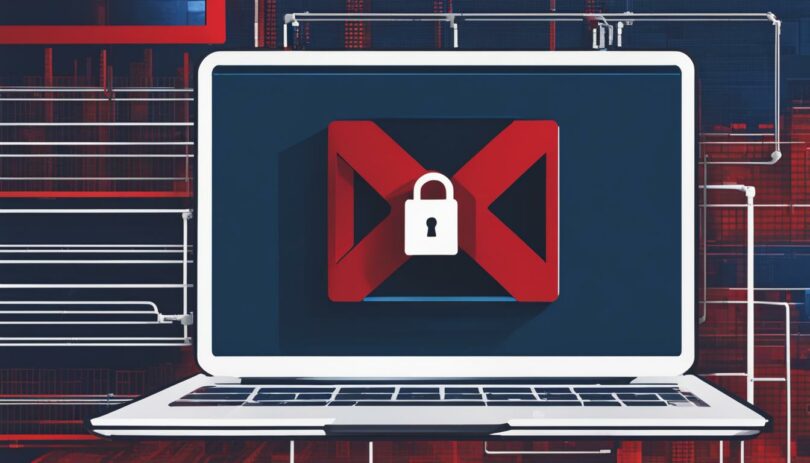Are you facing the frustrating problem of not being able to access the internet when connected to a VPN? You’re not alone. Many users encounter this issue, but fortunately, there are solutions available to help you troubleshoot and resolve the problem.
The most common reason for not being able to browse the internet when connected to a VPN is a DNS configuration issue. This means that the process of translating domain names into IP addresses, which enables internet browsing, is not functioning correctly. However, there are several steps you can take to troubleshoot and fix this problem.
To start, try pinging an external IP address, such as 1.1.1.1 or 8.8.8.8, to verify if you have internet connectivity. If you receive replies, it indicates that the issue is likely DNS related. In such cases, resetting your DNS settings, configuring OpenDNS, or disabling proxies or browser configurations can be effective steps to resolve the issue.
Another potential cause of internet access issues when connected to a VPN is the VPN server itself. It could be down, blocked, or experiencing technical difficulties. In such cases, reconnecting to a different server or contacting your VPN provider for assistance can help restore internet connectivity.
Adjusting default gateway and proxy settings can also interfere with internet access when a VPN is turned on. Disabling the use of default gateway on the remote network and reviewing and adjusting proxy server settings are recommended steps to resolve such issues.
Other factors that can contribute to no internet access while using a VPN include having a VPN kill switch enabled, using an outdated VPN version, or having misconfigured time and date settings. Disabling the VPN kill switch, updating your VPN software, or verifying and adjusting time and date settings can help resolve these issues.
It’s important to note that opting for a reliable, paid VPN service is generally recommended over using free VPN providers. Free VPNs often have limitations and potential risks associated with their services, including overloaded servers and data tracking.
By following the appropriate troubleshooting steps and seeking assistance from your VPN provider, you can overcome the challenge of no internet access when connected to a VPN and enjoy a secure and reliable online browsing experience.
Key Takeaways:
- When facing no internet access while connected to a VPN, it’s often due to a DNS configuration issue.
- Resetting DNS settings, configuring OpenDNS, and disabling proxies or browser configurations can help resolve this issue.
- If the VPN server is down, blocked, or experiencing technical difficulties, reconnecting to a different server or seeking assistance from your VPN provider can restore internet connectivity.
- Adjusting default gateway and proxy settings can interfere with internet access when using a VPN, so ensuring the correct settings are in place is essential.
- Disabling the VPN kill switch, updating VPN software, and verifying time and date settings can also help resolve no internet access issues.
- Choosing a reliable, paid VPN service is recommended for a more secure and stable online browsing experience.
How Does a VPN Route Traffic?
A VPN (Virtual Private Network) routes traffic by creating a secure tunnel between your device and a remote network. When you connect to a VPN, your internet traffic is encrypted and protected from prying eyes, ensuring your online privacy. The VPN server acts as an intermediary between your device and the websites or services you access, making it appear as though your internet activity is originating from the VPN server itself.
This routing process involves several key steps:
- Encryption: When you connect to a VPN, your data is encrypted before being transmitted over the internet. This encryption ensures that your information remains confidential and secure.
- Tunneling: The encrypted data is then encapsulated in a protected tunnel, which prevents it from being intercepted or tampered with by unauthorized parties. This tunneling process helps maintain the integrity and confidentiality of your internet traffic.
- Routing Protocols: VPNs use routing protocols to determine the most efficient path for your data to travel from your device to the VPN server and vice versa. These protocols ensure that your data reaches its destination securely and without unnecessary delays.
- Traffic Flow: Once your data reaches the VPN server, it is decrypted and sent to its intended destination on the internet. The response from the destination is then encrypted, sent back through the VPN server, and decrypted on your device, completing the traffic flow.
By routing your internet traffic through a VPN, you can enjoy the benefits of enhanced security, privacy, and anonymity while browsing the web.
Table: VPN Routing Process
| Step | Description |
|---|---|
| 1 | Encryption |
| 2 | Tunneling |
| 3 | Routing Protocols |
| 4 | Traffic Flow |
Why Is There No Internet When My VPN Is On?
There are several potential reasons for not having internet access when your VPN is connected. These include a bad internet connection, DNS configuration issues, VPN server issues, incorrect VPN protocol or port settings, default gateway settings, proxy server settings, VPN kill switch enabled, using an older VPN version, or misconfigured time and date settings. Troubleshooting steps may involve checking network status, changing DNS settings, switching VPN servers, adjusting default gateway or proxy settings, disabling VPN kill switch, updating VPN software, or verifying time and date settings.
To determine if the problem is related to your internet connection or VPN configuration, try accessing the internet without the VPN. If you have internet access without the VPN, it’s likely an issue with your VPN settings. If you still can’t access the internet, the problem may be with your internet connection.
One common issue is DNS configuration. DNS stands for Domain Name System, and it translates domain names into IP addresses. When DNS configuration is incorrect, it can prevent proper internet access. To resolve this, you can try resetting your DNS settings, configuring OpenDNS, or disabling any proxy server settings. These steps may vary depending on your operating system, so consult the appropriate documentation or contact your VPN provider for assistance.
| Possible Causes | Troubleshooting Steps |
|---|---|
| Bad internet connection | – Check network status – Reset modem or router |
| DNS configuration issues | – Reset DNS settings – Configure OpenDNS – Disable proxy server settings |
| VPN server issues | – Switch to a different VPN server – Contact VPN provider for assistance |
| Incorrect VPN protocol or port settings | – Adjust VPN protocol and port settings – Use recommended settings from VPN provider |
| Default gateway settings | – Adjust default gateway settings – Disable use of default gateway on remote network |
| Proxy server settings | – Review and disable proxy server settings if necessary |
| VPN kill switch enabled | – Disable VPN kill switch |
| Using an older VPN version | – Update VPN software to the latest version |
| Misconfigured time and date settings | – Verify and adjust time, date, and time zone settings |
Resolving DNS Configuration Issues
DNS configuration issues can often lead to internet access problems when connected to a VPN. DNS, or Domain Name System, is responsible for translating domain names into IP addresses, allowing for seamless internet browsing. When these settings are misconfigured, it can result in connection issues. Here are some steps you can take to resolve DNS configuration issues:
Reset DNS Settings
If you suspect that DNS settings are causing the problem, you can try resetting them to their default values. This can be done by accessing your network settings and selecting the option to reset DNS settings. Keep in mind that this might require administrative permissions, so make sure you have the necessary access before making any changes.
Configure OpenDNS
Another solution is to configure your system to use OpenDNS servers instead of your default DNS servers. OpenDNS provides faster and more reliable DNS resolution, which can help resolve any connectivity issues. To configure OpenDNS, you will need to update your network settings and enter the appropriate DNS server addresses provided by OpenDNS.
Disable Proxy Settings
If you are using a proxy server, it’s worth checking if it is causing any conflicts with your VPN connection. Proxy settings can sometimes interfere with DNS resolution and prevent internet access. To troubleshoot this issue, disable any proxy settings that may be enabled and test your connection again.
| Common DNS Configuration Issues | Solutions |
|---|---|
| Incorrect DNS server addresses | Reset DNS settings or configure OpenDNS |
| Proxy server conflicts | Disable proxy settings |
| Outdated DNS cache | Flush DNS cache |
| Firewall blocking DNS | Check firewall settings and allow DNS traffic |
By following these steps, you can troubleshoot and resolve DNS configuration issues that may be causing internet access problems when connected to a VPN. Remember to always seek assistance from your VPN provider if you encounter any difficulties or need further guidance.
Troubleshooting VPN Server Issues
When experiencing no internet access while your VPN is on, it could be due to issues with the VPN server. There are several possible reasons for this, including a server that is down, blocked, or facing technical difficulties. To resolve this problem and restore internet connectivity, consider the following steps:
- Reconnect to a different VPN server: VPN providers usually offer multiple servers, so try connecting to another server to see if the issue persists.
- Choose the correct VPN protocol and port: Certain countries or networks may block specific VPN protocols or ports. Contact your VPN provider for guidance on suitable protocols and ports to use.
- Check firewall and antivirus settings: Firewalls or antivirus software on your device might be blocking the VPN server connection. Temporarily disabling them or configuring the settings can help resolve the issue.
- Contact your VPN provider: If the problem persists, reach out to your VPN provider’s support team. They can provide further assistance and offer solutions tailored to your situation.
By following these troubleshooting steps, you can address VPN server issues and restore your internet access while using a VPN.

Table: Comparison of VPN Server Availability
| VPN Provider | Number of Servers | Server Locations | Server Uptime |
|---|---|---|---|
| Provider A | 500+ | 40+ | 99.9% |
| Provider B | 1000+ | 60+ | 99.8% |
| Provider C | 2000+ | 80+ | 99.7% |
Note: The table above provides a comparison of VPN providers based on the number of servers they offer, the locations of those servers, and their server uptime. It is important to choose a VPN provider with a reliable network infrastructure to ensure consistent internet access.
Adjusting Default Gateway and Proxy Settings
When connecting to a VPN, you may experience internet access issues due to default gateway and proxy server settings. These settings can interfere with your connection and prevent you from accessing the internet. To resolve this problem, you can adjust the default gateway and proxy settings to ensure proper internet access while using a VPN.
To adjust the default gateway settings, you need to disable the use of the default gateway on the remote network in the TCP/IP settings. By doing so, you allow your device to use the local gateway for internet access, bypassing any potential conflicts caused by the VPN. Adjusting the default gateway settings can alleviate internet connectivity issues and restore your ability to browse the web.
Proxy server settings can also impact your internet access when connected to a VPN. It is recommended to review and change the proxy settings if necessary. Ensure that proxy settings are disabled or configured correctly to allow unrestricted access to the internet. By adjusting proxy server settings, you can overcome any limitations or conflicts that may be hindering your VPN connection.
Example Table: Default Gateway and Proxy Settings
| Operating System | Adjusting Default Gateway Settings | Adjusting Proxy Server Settings |
|---|---|---|
| Windows | 1. Open Network Connections settings. | 1. Open Internet Options in Control Panel. |
| Mac | 1. Go to System Preferences. | 1. Open Network settings. |
| Linux | 1. Access terminal or network settings. | 1. Adjust browser proxy settings. |
By following the specific steps provided for your operating system, you can easily adjust the default gateway and proxy settings to ensure a seamless internet browsing experience while connected to your VPN.
Disabling VPN Kill Switch
In some cases, when a VPN connection drops and the kill switch feature is enabled, it can result in no internet access. The kill switch is designed to enhance security by immediately disconnecting the device from the internet if the VPN connection is interrupted. However, when the connection is reestablished, the kill switch can prevent internet connectivity.
To resolve this issue, you can manually disable the VPN kill switch. The exact steps may vary depending on the VPN software you are using, but generally, you can find the option to disable the kill switch in the settings or preferences menu. Once the kill switch is disabled, you should be able to regain internet access after a VPN connection loss.
It’s important to note that disabling the kill switch temporarily reduces the security provided by the VPN. Therefore, it’s advisable to re-enable the kill switch after troubleshooting the internet connectivity issue, ensuring your online activities remain protected.

By following these steps, you can effectively address the problem of no internet access after a VPN connection, allowing you to browse the web and use online services seamlessly while maintaining the benefits of a secure VPN connection.
Updating VPN Software
Keeping your VPN software up to date is crucial for ensuring a smooth and secure internet connection. Outdated versions of VPN software can lead to various connection issues, including no internet access. By regularly updating your VPN software, you can resolve compatibility problems, improve performance, and enhance security features.
Updating your VPN software is a straightforward process. Start by uninstalling the existing version from your device. You can usually do this through the control panel or settings menu, depending on your operating system.
Once you have uninstalled the old version, visit the website of your VPN provider and download the latest version of the software. Follow the installation instructions provided by the VPN provider to install the new version on your device. This will replace the outdated software with the updated version.
After updating your VPN software, it is recommended to restart your device to ensure any changes take effect. Once your device is back up and running, launch the VPN software and connect to your desired server. You should now have an updated and stable VPN connection, allowing you to browse the internet securely and without any issues.
| Benefits of Updating VPN Software | Drawbacks of Outdated VPN Versions |
|---|---|
| Improved compatibility with operating systems and devices | Potential security vulnerabilities |
| Enhanced performance and stability | Limited access to new features and functionality |
| Up-to-date encryption and security protocols | Incompatibility with newer VPN servers and technologies |
Updating your VPN software is a simple yet important step in troubleshooting connection issues and ensuring a secure online experience. By regularly checking for updates and installing the latest version of your VPN software, you can maintain a reliable and efficient VPN connection, protecting your privacy and accessing the internet with peace of mind.
Verifying Time and Date Settings
Misconfigured time and date settings can sometimes cause VPN blocking internet access. It is important to ensure that the time, date, and time zone settings on your device are accurate. Incorrect time and date settings can lead to authentication errors and connectivity issues when connected to a VPN.
To verify and adjust your time and date settings:
- Go to the system settings on your device.
- Locate the date and time settings.
- Check that the time zone is correctly selected.
- Ensure that the date and time are set to the current values.
- If necessary, manually adjust the settings to the correct values.
By verifying and adjusting your time and date settings, you can resolve VPN connection errors related to incorrect time synchronization. This simple step can help restore your internet connectivity while connected to a VPN.

Common VPN Connection Errors Related to Time and Date Settings
When your device’s time and date settings are misconfigured, you may encounter various VPN connection errors. Some common errors that can be attributed to incorrect time and date settings include:
“Connection error: Please check your internet connection and try again.”
“VPN authentication failed.”
“Time synchronization error.”
These errors indicate that there is a discrepancy between your device’s time and the VPN server’s time, preventing a successful connection. Verifying and adjusting your time and date settings will help resolve these errors and ensure a smooth VPN connection experience.
Be Wary of Free VPN Providers
When it comes to VPN services, free providers may appear appealing at first glance. However, it is essential to be cautious and informed about the potential risks that come with using these services. While free VPNs may offer some level of online privacy and anonymity, they often come with limitations and drawbacks that can hinder your internet experience.
One of the main concerns with free VPN providers is the issue of overloaded servers. As these services are free, they tend to have a large number of users accessing their servers simultaneously. This can result in slow connection speeds and frequent disruptions, making it difficult to browse the internet seamlessly. Additionally, with limited server options, you may not have access to the optimal server locations for your needs.
Another significant risk associated with free VPNs is the potential for data tracking and privacy breaches. These providers need to generate revenue somehow, and they often do so by selling user data to third parties for targeted advertising. This compromises your privacy and defeats the purpose of using a VPN to protect your personal information. Paid VPN services, on the other hand, have a vested interest in protecting their users’ data and are more likely to implement stringent privacy measures.
Conclusion
When connected to a VPN, experiencing no internet access can be frustrating. However, by following a series of troubleshooting steps, you can overcome this issue and restore internet connectivity. By identifying and resolving DNS configuration issues, checking network status, adjusting default gateway and proxy settings, disabling the VPN kill switch, updating your VPN software, and verifying time and date settings, you can solve common VPN internet access problems.
It is important to note that using free VPN providers may present limitations and risks. Overloaded servers and potential data tracking are common issues with free VPN services. Considering the benefits of paid VPN services, such as reliable internet connections and improved data security, is strongly recommended. While occasional glitches may occur, the advantages of using a paid VPN outweigh the potential risks associated with free providers.
By following the appropriate troubleshooting steps and seeking assistance from your VPN provider, you can overcome internet access issues while connected to a VPN. Whether it’s solving DNS configuration problems, adjusting settings, or updating your software, taking the necessary steps will ensure a smooth and secure browsing experience. Troubleshooting VPN internet access issues is essential in maintaining uninterrupted connectivity and enjoying the benefits of a VPN.
FAQ
Why can’t I access the internet when connected to a VPN?
The most common reason for not being able to browse the internet when connected to a VPN is a DNS configuration issue. Other potential reasons include bad internet connection, VPN server issues, incorrect VPN protocol or port settings, default gateway settings, proxy server settings, VPN kill switch enabled, using an older VPN version, or misconfigured time and date settings.
How does a VPN route traffic?
A VPN creates a secure tunnel between your internet connection and the remote network. It encrypts your data and protects your privacy by shielding your IP address and routing internet traffic through an encrypted tunnel. The VPN server becomes the source of your data and ensures that your data is undecipherable to online intruders.
Why is there no internet when my VPN is on?
There could be various reasons for not having internet access when your VPN is connected, including DNS configuration issues, VPN server issues, incorrect VPN protocol or port settings, default gateway settings, proxy server settings, VPN kill switch enabled, using an older VPN version, or misconfigured time and date settings.
How can I resolve DNS configuration issues?
DNS configuration issues can prevent internet access when connected to a VPN. To resolve these issues, you can try resetting DNS settings, configuring OpenDNS, and ensuring that proxy settings are disabled. It is also recommended to try alternative browsers or safe mode to isolate any browser configuration issues.
How can I troubleshoot VPN server issues?
If the VPN server is down, blocked, or experiencing issues, it can disrupt internet access when connected. To troubleshoot this, you can try reconnecting to a different server offered by your VPN provider. It is also important to ensure that you are selecting the correct VPN protocol and port as certain protocols or ports may be blocked in some countries.
How can I adjust default gateway and proxy settings?
Default gateway settings and proxy server settings can interfere with internet access when a VPN is turned on. To adjust default gateway settings, you can disable the use of the default gateway on the remote network in TCP/IP settings. Proxy server settings should be reviewed and changed if necessary to allow proper access.
How can I disable the VPN kill switch?
A VPN kill switch is a security feature that disconnects the device from the internet when the VPN connection drops. If the kill switch is enabled and the VPN connection comes back online, it may prevent internet access. To disable the kill switch manually, you can adjust the settings in your VPN software.
How can I update my VPN software?
Using an outdated VPN version can lead to connection issues and no internet access. To update your VPN software, it is recommended to uninstall the existing software, download the newest version provided by your VPN provider, and then reinstall it on your device. This can help resolve compatibility issues and improve VPN performance.
How can I verify time and date settings?
Misconfigured time and date settings can sometimes cause VPN blocking internet access. To verify and update your time and date settings, you can check the settings on your device and ensure they are correct. It may be necessary to adjust the settings manually if needed.
Should I be wary of free VPN providers?
Free VPN providers may have limitations and risks associated with their services. It is common to experience overloaded servers and potential data tracking when using free VPNs. It is recommended to opt for a paid VPN service as they offer more reliable internet connections and better data security. While glitches may occur, the issues are fixable and outweigh the potential risks of using free VPN providers.
What should I do if I experience VPN internet access issues?
Troubleshooting no internet access when connected to a VPN involves identifying and resolving DNS configuration issues, checking network status, adjusting default gateway and proxy settings, disabling VPN kill switch, updating VPN software, and verifying time and date settings. It is important to follow appropriate steps and seek assistance from your VPN provider if needed to restore internet connectivity while using a VPN.






